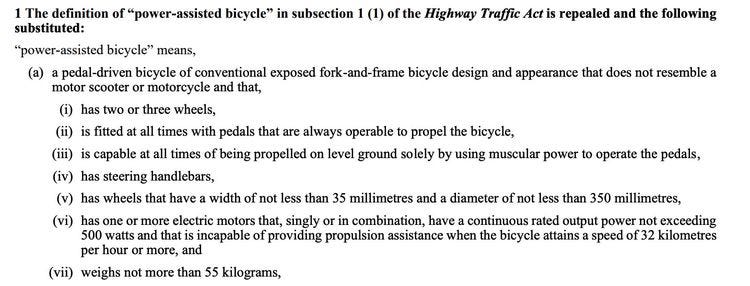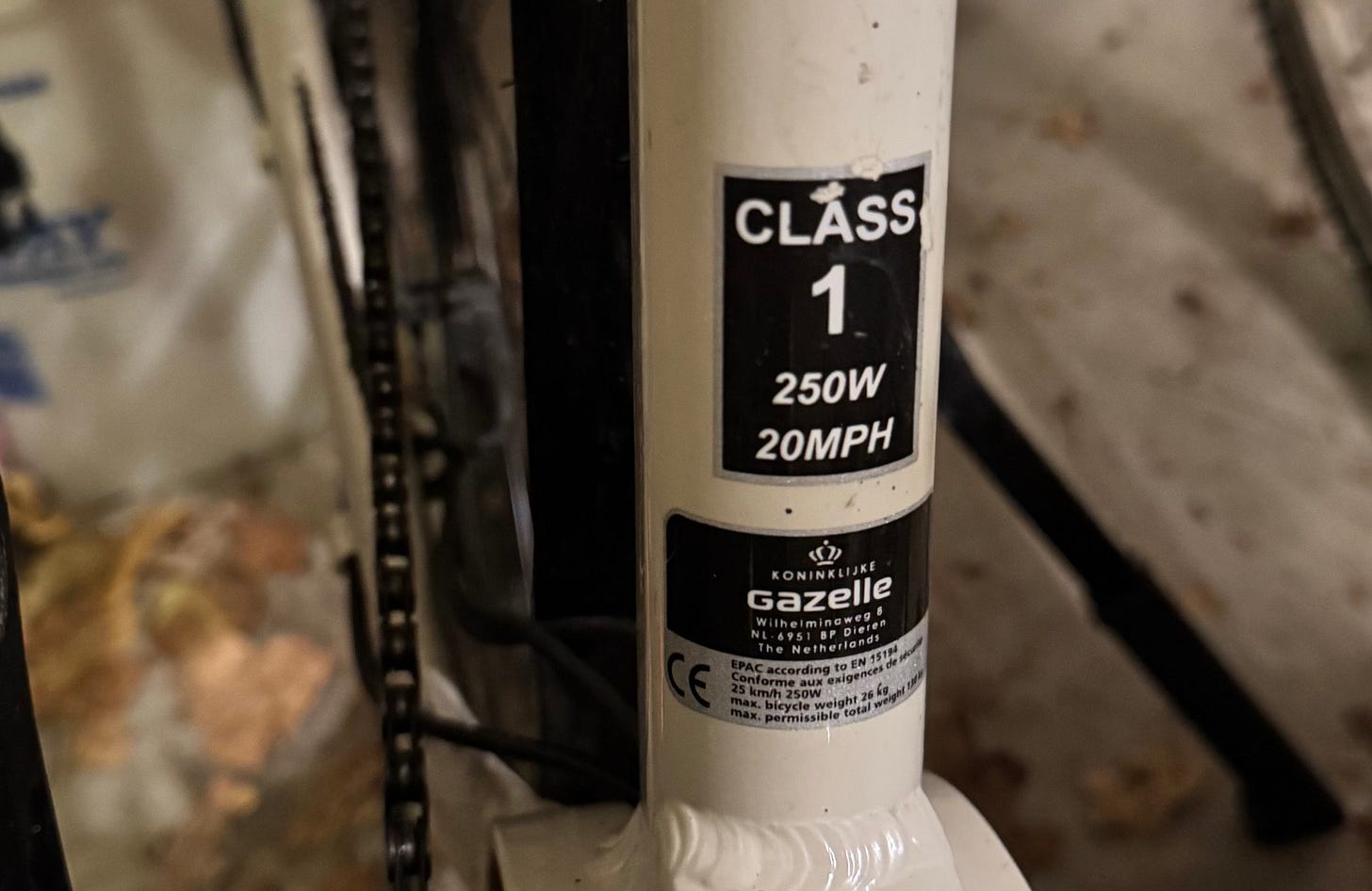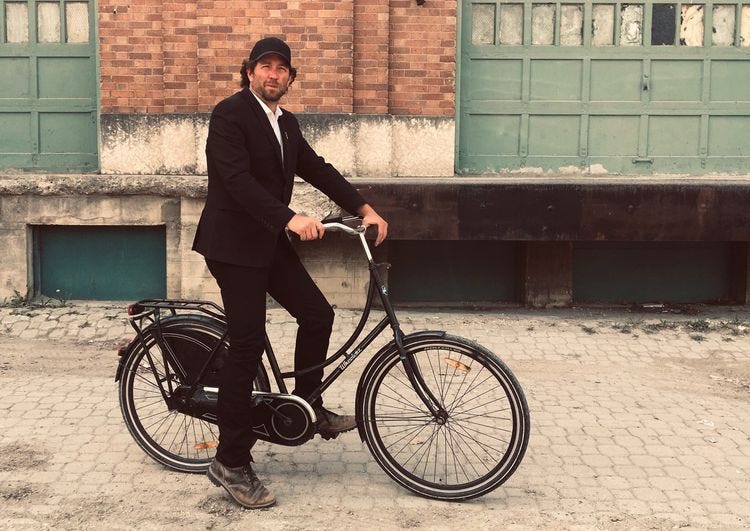It's time to rethink our e-bike regulations
And just eliminate Class 3; twenty is plenty for e-bike speed.
In New York State, the Governor wants to regulate heavy "ultra-heavy Class 3" electric bikes and treat them like mopeds that require licencing and registration and are not allowed in bike lanes.
In Europe, an e-bike is also known as a pedelec, a bike you must pedal but with an electric boost. The motors are limited to 250 watts (though they can have peak boosts), and the speed is limited to 25 km/hr, or 15.5 MPH. They play nice in bike lanes.
Anything faster or with a bigger motor is considered a Speed or S-pedelec. It can’t go in the bike lanes and generally requires a moped or driver's license, insurance, and registration.
When e-bikes came to the USA, somehow, American exceptionalism kicked in. Our distances are greater! Our hills are steeper! Our riders are heavier! So, of course, they made their own standard, ignoring years of European experience and raising the speed to 20 MPH (faster than most cyclists) and the motor power to 750 watts. They threw in a Class 2, like Class 1, but with a throttle, so you can sit on it and go 20 MPH all day without pedalling, thanks to those 750 watts. For some reason, they also made a Class 3 category where you can go 28 MPH on bikes indistinguishable from Class 1 or 2.
Needless to say, it has not worked out well. Pedestrians are complaining, and some analog cyclists are afraid to use the bike lanes, which are often not wide enough to handle the traffic and let someone faster do a safe pass. I wrote earlier about the situation in New York:
So, in the end, what we have is a toxic recipe of insufficient bike infrastructure to handle the numbers, underpaid delivery people going as fast as they can to make a living, a lot of fast electric two-wheelers that everyone thinks are e-bikes but are really mopeds or scooters, and, no doubt, a few jerks on e-bikes. Stir it all up and cook on social media, and you have an e-bikelash.
Gov. Hochul’s proposal is to go after heavy e-bikes that weigh over 100 pounds. This is silly; as Gersh Kuntzman of Streetsblog NYC points out, “very few class 3 electric bikes reach 100 pounds. A popular Aventon Aventure.2 weighs about 76 pounds — and was soundly thrashed in a 2023 review in Gear Lab as "too heavy."
A better move would be to just eliminate Class 3 e-bikes. If it goes over 20 MPH, it should be considered a moped and requires a licenced driver, registration and insurance. For years, activists have been saying “twenty is plenty” for cars, and it certainly is for e-bikes.
An even better move would be to develop a North American standard for every province and state so that we don’t get all of this silliness with every town, city, state and province having its own regulations.
In Ontario, Canada, where I live, there are no separate classes; an e-bike is supposed to look like a bike (not a scooter!) have a motor no bigger than 500 watts, and not go faster under power than 32 km/h (20 MPH). But you can go into many shops and get American-style 750-watt motors and faster 28 MPH speeds, and who can tell? They all look alike. I get passed in the bike lane all the time when I am going 20.
My Gazelle (bought in Ontario) has a sticker describing it as Class 1, but there is no such thing here, and the tires are too narrow to comply with that silly clause (v) specifying minimum width. Why does that even exist?
Then, the City of Toronto has its own weird standards; an American Class 1 bike could go in the bike lanes, but a Class 2 with a throttle could not; it doesn’t require some muscular power. Scooters, limited to 20 MPH, can go in painted bike lanes but not in physically separated ones. Who knows this? Who enforces it?
But if the manufacturers, retailers and legislators came up with a simple standard, a single speed limit, a realistic power limit, and serious battery regulation to eliminate fire risk, we wouldn’t have all these problems.
Or better still, we should look at the bigger picture.
A few years ago, I talked with Anders Swanson, then head of Vélo Canada Bikes, who thought we should look at transportation as a continuum, figure out what the right vehicle for the job is, and design our regulations and our communities accordingly.
“The ins and outs of regulation distract from the real issue. On the spectrum from F-350 to ballet slipper, even the heaviest cargo bike is a godsend. Other countries have figured this out already. Canada should adopt a vision of transport in which you end up with the right infrastructure ready for the lightest vehicles.”
He calls for unified regulation of transportation based on addressing everything this way. We’d calibrate all policies aimed at reducing the weight (vehicle type) and kilometers (land use) and speed (law/design). In that world, he says, an e-cargo bike is the first thing people need to solve simple problems like “how do I get these little monsters home from daycare uphill and grab a melon.”
Instead, we have the War on the Car, with bike lanes getting ripped up in Ontario and nobody looking at the bigger transportation and urban design picture. It should all be simply: “what is the best way to get around in a climate crisis and a crowded city?”








As always, the pedestrian is the loser in the end. Now that it's winter here in Toronto those e-bikes with huge fat tires seem to be everywhere downtown (mostly, but not exclusively, delivery drivers).
A couple days ago one ripped past me on the sidewalk, then weaved through a crosswalk filled with pedestrians at high speed. Its giant tires looked like they belonged on a car, and the frame itself was also enormous, with big flat paneled sections of metal. The handlebars were level with my shoulders. wouldn't be surprised if the rider plus vehicle weighed 250 lbs or more. A pedestrian collision could easily be fatal even at a lower speed. Calling that thing a "bike" is really stretching the limits of reality.
But as with everything related to Toronto traffic: rules and vehicle classes and other regulations are pointless when there is zero enforcement. Seeing adults riding regular bikes on crowded sidewalks angers me, but with these things, the selfishness escalates to another level.
Idk I have issues with artles like this. Instead of putting another constraint on bicycles we should be looking at building better bicycle infrastructure that can handle handle the higher 28 speeds. Build wider paths with bike only sections and limit/police speeds just like a car. I think e-bikes are opening bicycling to a bigger population and we need to build/embrace rather than restrict.